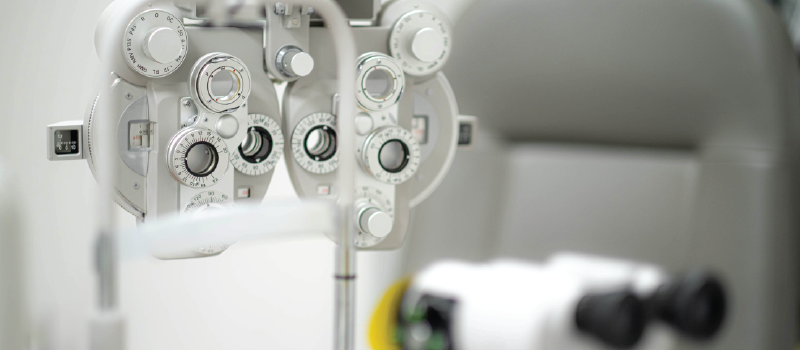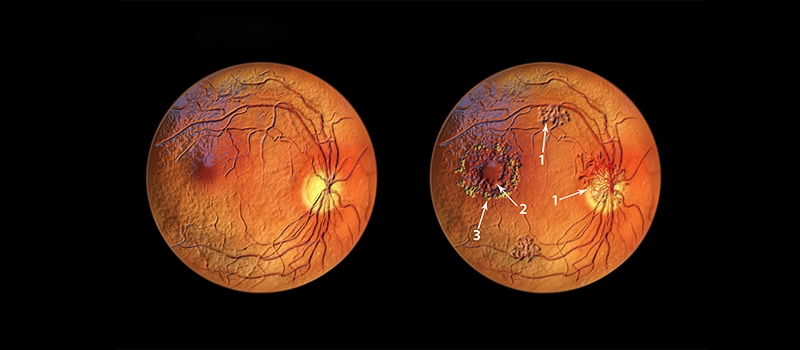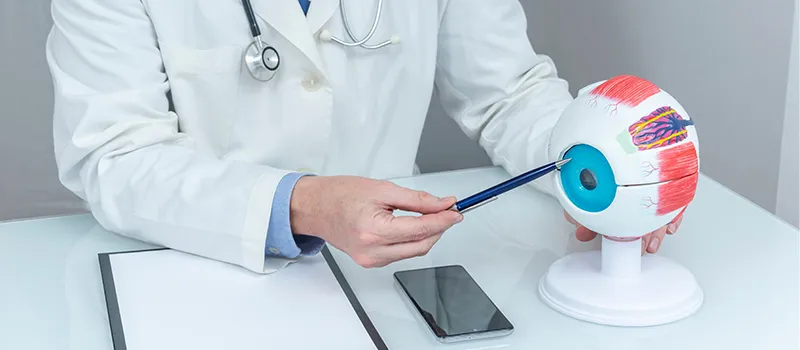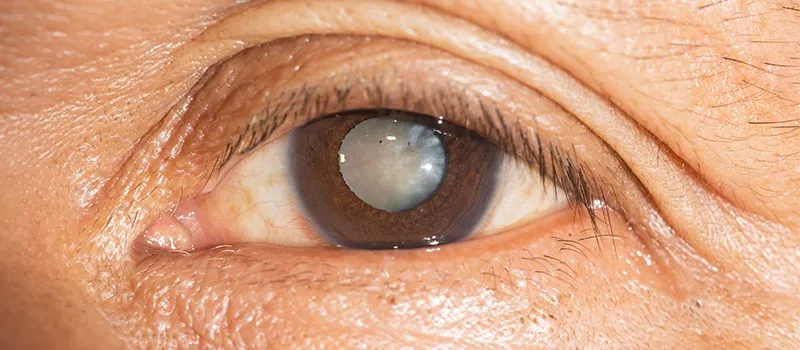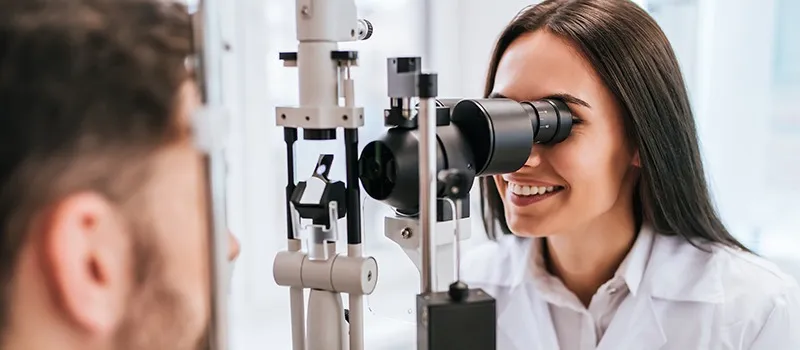
Glaucoma: A Silent Threat to Vision
Glaucoma is a group of eye conditions that can damage the optic nerve, which is vital for good vision. It is among the leading causes of vision impairment and blindness globally. It is referred to as a silent threat.
In this blog, we’ll read about this vision impairment condition, including its anatomy and physiology, risk factors, types, diagnosis, prognosis, prevention, treatment, and recent advancements. Let’s start with the most important and majorly asked question, why is glaucoma called a silent threat to vision?
Why is glaucoma called a silent threat to vision?
In contrast to certain eye disorders that could result in pain, redness, or other evident discomfort, glaucoma can progress silently, and without any clear warning indications. It can cause blindness and irreversible vision loss if it is not treated timely.
Here are a few reasons why glaucoma is considered a silent threat:
- Lack of Early Symptoms: People frequently do not exhibit any symptoms at all in the early stages of glaucoma. The gradual loss of peripheral vision may go unnoticed since the early stages of the condition mostly spare the central vision, which is necessary for tasks like reading and driving.
- Painless Progression: Optic nerve damage from glaucoma usually occurs without discomfort. People might delay seeking medical assistance until the disease has progressed which contributes to delayed discovery.
- Peripheral Vision Loss: Peripheral vision is frequently the first impacted area by glaucoma, however the affected person may not notice this right away. The continued functioning of central vision during the early stages of this condition can lead to a delusion of security as it is responsible for tasks requiring concentrated attention.
- Gradual Vision Changes: Glaucoma-related visual loss typically worsens gradually over time. People can adapt to their visual limits as a result of the progressive alterations, not realizing the full degree of the damage until it has progressed to an advanced level.
- Importance of Regular Eye Exams: For early glaucoma detection, routine eye exams are essential. In order to identify any indications of peripheral vision loss, eye care specialists can monitor intraocular pressure, evaluate the condition of the optic nerve, and conduct visual field tests during an examination of the eyes. On the other hand, glaucoma may go undiagnosed until it results in significant symptoms or irreparable vision loss if people do not get routine eye exams.
The phrase “silent threat” highlights the value of preventative eye care and routine examinations, particularly for people with risk factors like age and family history. Early identification and care of the condition with the right medications can significantly slow the progression of glaucoma and help preserve vision.
Overview of Glaucoma
Understanding the details of glaucoma, including its types, risk factors, symptoms, and treatment options, is essential for both individuals at risk and healthcare professionals to effectively manage and prevent vision loss associated with this condition. Regular eye check-ups remain a cornerstone in the early detection and management of glaucoma.
Characterisation
Glaucoma is characterized by:
- Optic Nerve: The optic nerve transmits visual information from the retina to the brain and hence, is crucial for vision. Glaucoma is characterised by optic nerve damage leading to vision loss.
- Intraocular Pressure (IOP): The eye maintains a delicate balance of fluid production and drainage. Increased intraocular pressure can result in an imbalance, contributing to optic nerve damage.
Risk Factors
- Elevated IOP: Elevated intraocular pressure is a major risk factor as it damages the optic nerve.
- Age: The risk of glaucoma rises with age, and it is more common in the elderly.
- Family History: A family history of glaucoma increases the likelihood of developing the condition.
- Ethnicity: People from specific ethnic backgrounds, such as Asians, Hispanics, and African Americans, are more vulnerable.
- Medical Conditions: Glaucoma risk can be elevated by conditions such as diabetes and cardiovascular illnesses. Additionally, prolonged corticosteroid use may turn out to be a risk factor.
- Eye Conditions: Certain anatomical anomalies of the eyes and high myopia (nearsightedness) can increase the risk of glaucoma.
Types of Glaucoma
There are several types of glaucoma, each with its characteristics and causes. Here’s an overview of these types:
1. Open-Angle Glaucoma: This is the most common form. The drainage angle between the iris and cornea is open, but the trabecular meshwork does not function properly, leading to increased intraocular pressure.
-
- Chronic Open-Angle Glaucoma: A steady, gradual rise in intraocular pressure. This kind of open-angle glaucoma is the most prevalent. It happens when the trabecular meshwork, which drains the aqueous humor (fluid in the eye), is not functioning properly, even though the drainage angle between the iris and cornea is open. This causes the intraocular pressure to gradually rise over time, eventually damaging the optic nerve.
- Normal-Tension Glaucoma: This particular subtype of open-angle glaucoma results in damage to the optic nerve, even when the intraocular pressure stays within the normal range. Although the precise explanation is not entirely known, this shows that forces other than pressure might be involved.
2. Closed-Angle Glaucoma: In this type, the drainage angle is blocked, causing a sudden increase in intraocular pressure and is considered a medical emergency.
-
- Acute Closed-Angle Glaucoma: This condition arises when the drainage angle is blocked by the iris pushing forward. A sharp rise in intraocular pressure brought on by this unexpected blockage results in symptoms including excruciating eye discomfort, headaches, nausea, and blurred vision. Although this is less frequent, you must get medical help right away to relieve the strain and prevent vision loss.
- Chronic Closed-Angle Glaucoma: Slower drainage angle closure results in a progressive rise in intraocular pressure. The drainage angle closes more slowly, and symptoms might not be as obvious. Vision loss may occur gradually over time as a result of chronic closed-angle glaucoma.
3. Secondary Glaucoma:
-
- Pseudoexfoliative Glaucoma: This kind is linked to an abnormal build-up of material on the eye’s lens, which raises intraocular pressure.
- Secondary Angle-Closure Glaucoma: This can occur due to various conditions, such as cataracts or tumors, which physically block the drainage angle.
4. Congenital Glaucoma:
-
- Primary Congenital Glaucoma: This rare type of glaucoma is usually brought on by anomalies in the drainage systems of the eye and is present from birth. It can cause damage to the optic nerve and elevated intraocular pressure if left untreated.
Symptoms
- Early Stages: Often asymptomatic.
- Advanced Stages: Peripheral vision loss, tunnel vision, difficulty adjusting to low light, and, in some cases, complete blindness.
Prognosis
- Early Detection: Crucial for managing and slowing the progression of glaucoma.
- Treatment: Focuses on lowering intraocular pressure and preserving vision.
- Regular Monitoring: Necessary for ongoing management.
Diagnosis
- Tonometry: Measures intraocular pressure.
- Ophthalmoscopy: Examines the optic nerve.
- Visual Field Testing: Assesses peripheral vision.
- Gonioscopy: Evaluate the drainage angle.
Treatment
The choice of treatment for glaucoma depends on the type and severity of glaucoma.
- Medications: Eye drops or oral medications are given to lower intraocular pressure. Prescription medications include prostaglandins, beta blockers, alpha-adrenergic agonists, carbonic anhydrase inhibitors, and Rho kinase inhibitors.
- Laser Therapy: Procedures like laser trabeculoplasty, cyclodiode laser, or iridotomy to improve drainage.
- Surgery: Trabeculectomy, Viscocanalostomy, Deep sclerectomy, trabecular stent bypass, drainage tubes, or other surgical interventions to create a new drainage channel.
No treatment till now has been proven for a complete cure for glaucoma but yes, these treatment methods are quite beneficial for preventing further damage and vision loss.
Prevention
- Regular Eye Exams: Highly crucial preventive step, especially for individuals at higher risk.
- Healthy Lifestyle: Exercise, maintaining a healthy weight, and not smoking may contribute to overall eye health.
It is imperative to take proactive measures to maintain their eye health, particularly those who are more vulnerable. Glaucoma management and vision preservation depend heavily on routine eye exams, knowledge of risk factors, and prompt intervention.
Glaucoma: Recent Advances
Here are some general trends and potential advancements that were being explored concerning glaucoma:
- Minimally Invasive Glaucoma Surgery (MIGS) procedures have gained popularity as they offer a less invasive alternative to traditional glaucoma surgeries. These procedures are intended to lower intraocular pressure by enhancing the eye’s natural drainage pathways. Trabecular micro-bypass stents and the usage of micro-incisions are two examples.
- Researchers are exploring neuroprotective agents that could potentially protect the optic nerve from damage, slowing down the progression of glaucoma.
- Artificial Intelligence (AI) is a revolutionizing advancement in Diagnosis and Monitoring. AI technologies are being developed for more accurate and efficient diagnosis of glaucoma. AI algorithms analyze imaging data to detect early signs of the disease and monitor its progression.
- Advances in telemedicine allow remote monitoring of glaucoma patients. This eliminates the need for frequent in-person visits by allowing medical professionals to monitor intraocular pressure and other pertinent factors.
- Sustained-release drug delivery systems, such as implantable devices or injections, are also being explored to provide a continuous release of glaucoma medications, reducing the need for daily eye drops. Ongoing research also focuses on the development of novel drug classes with improved efficacy and reduced side effects.
- Some investigations are underway to explore the potential of gene therapy for glaucoma. Gene therapy aims to modify or replace defective genes associated with the disease.
It’s essential to note that the field of medicine, including ophthalmology, is dynamic, and new advancements occur regularly. For the latest information on advancements in glaucoma treatment, it’s recommended to consult recent medical literature, and clinical trial updates, join webinars, or enroll in online courses by top ophthalmologists who can provide the most up-to-date information on available treatments and emerging therapies.
Checklist for an Ophthalmology student to have a comprehensive understanding of the condition:
- Introduction to Glaucoma
- Epidemiology
- Risk Factors
- Pathophysiology
- Glaucoma Types
- Clinical Presentation
- Diagnostic Tools and Methods
- Treatment Options
- Advancements and Emerging Trends
- Patient Management and Education
- Research Opportunities
- Case Studies
- Clinical Experience
Remember to stay updated with the latest literature and attend relevant conferences or seminars to enhance your knowledge. Glaucoma is a complex and evolving field, and staying informed will contribute to your effectiveness as a future healthcare professional.
Must Read: Basic Toolkit for Glaucoma- Dr. Parul Ichhpujani
Click here to learn more about glaucoma from top faculty and ophthalmologists.
Frequently Asked Questions (FAQs):
Q1. Why is glaucoma called a silent threat to vision?
Ans. The reason glaucoma is called a “silent threat to vision” is that it usually advances slowly and without any obvious symptoms in its early stages. In contrast to certain eye disorders that could result in pain, redness, or other evident discomfort, glaucoma can progress silently, and without any clear warning indications. It can cause blindness and irreversible vision loss if treatment is not treated timely.
Q2. What are the major risk factors for glaucoma?
Ans. While elevated intraocular pressure is a major risk factor, other factors include age, family history, ethnicity (African Americans, Hispanics, and Asians are at higher risk), and certain medical conditions like diabetes. Additionally, individuals with high myopia (nearsightedness) may also be at an increased risk.
Q3. Which are the recommended online courses for aspiring ophthalmologists?
Ans. The recommended online courses for aspiring Ophthalmologists include Ophthalmology for UnderGrads by Dr. Parul Ichhpujani and Dr. Talvir Sidhu and Ophthalmology MD online course by Dr N. Venkatesh Prajna.
Related post
